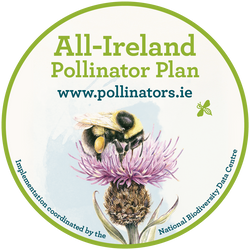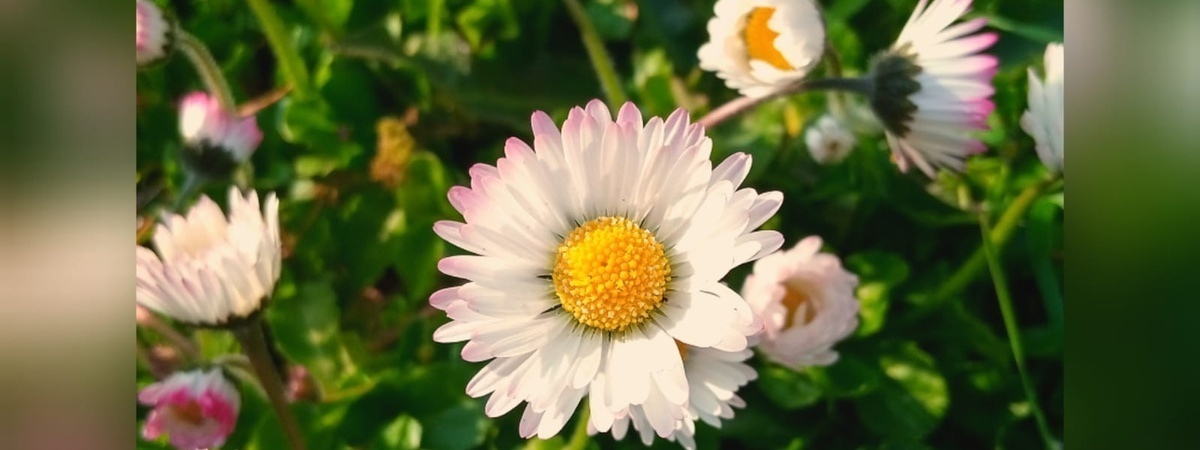

The Idea
The aim of Pollinator Plan Juniors is to enable students to help our pollinating insects that are struggling to find food and are declining in numbers. The health of our pollinators is crucial to ensure the sustainability of our food, avoid additional economic impacts on agriculture, and protect the health of the environment. Through the Pollinator Plan Juniors, students can learn about our pollinators, why they’re important, and what they need to survive. The programme includes many resources and lesson plans for classes that offer students a constructive way to help the planet and ecosystems, protect biodiversity, and learn about growing and gardening.
Please join us on our journey to reach out to the smallest and maybe unnoticable creates, may it be plants, animals or humans to make this planet a better one. Valuing the little ones such as daisies and little children, will create something greater and better in our later life. Dont dismiss little beginnings! Planting little seeds and valuing little plants will one day bring great things to appearance! Let us work together, to make Tyrrelstown a better place!
Don't judge each day by the harvest you reap but by the seeds that you plant. (Robert Louis Stevenson)
The Idea
The aim of Pollinator Plan Juniors is to enable students to help our pollinating insects that are struggling to find food and are declining in numbers. The health of our pollinators is crucial to ensure the sustainability of our food, avoid additional economic impacts on agriculture, and protect the health of the environment. Through the Pollinator Plan Juniors, students can learn about our pollinators, why they’re important, and what they need to survive. The programme includes many resources and lesson plans for classes that offer students a constructive way to help the planet and ecosystems, protect biodiversity, and learn about growing and gardening.
Please join us on our journey to reach out to the smallest and maybe unnoticable creates, may it be plants, animals or humans to make this planet a better one. Valuing the little ones such as daisies and little children, will create something greater and better in our later life. Dont dismiss little beginnings! Planting little seeds and valuing little plants will one day bring great things to appearance! Let us work together, to make Tyrrelstown a better place!
Don't judge each day by the harvest you reap but by the seeds that you plant. (Robert Louis Stevenson)
After experiencing preparing the soil for the new year to arrive has strengthened the children's muscles and mind. When the seeds were sown, the gentleness and concentration was challenged, not to leave empty spaces and not to choke the other seeds and flowers by sowing too many seeds on one spot. Waiting and watering was the next step, where big and small had to challenge their patient nature and heart over a long period of time. When finally, the new flowers appeared, there was joy and excitement along the way, while looking after the school garden and polytunnel of the school. At the children’s coming and going to and from the school, they kept on checking what new things they can discover. Some of the beautiful flowers even made it to the children’s home’s kitchen table 😉.
As slowly the flowers of the established biodiversity corner came to their lives-end, it was a sad time for many children, to witness how their heads bent down, changed colours and finally made their way down to the ground. This was a time to talk about life and death and how nature has its way throughout the year. It takes an extra effort to encourage children to look forward to the new springtime and wait for new flowers to grow again.
Now, is the time to fully tidy up our biodiversity corner and let the cold season come and bring quietness and rest over nature. We will all treasure the last few flowers glowing in the dark, as well as observing the birdfeeders which will hopefully attract many birds during the cold season, through their beautiful design (and food) from our 5th class pupils. New flower bulbs will accompany the seeds who are hiding in the ground and receive a restful time during the winter.
Soon, the flower corner will also be accompanied by more trees, our new established wormery and the long-awaited biodiversity signs we plan to purchase with the remaining grant. So, we are patiently waiting for the spring to arrive and see what else we can add to the beautiful area of our school.
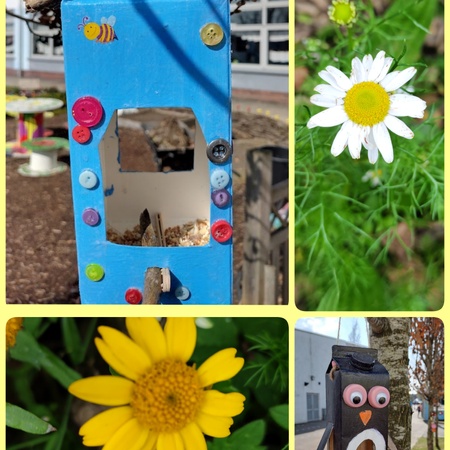
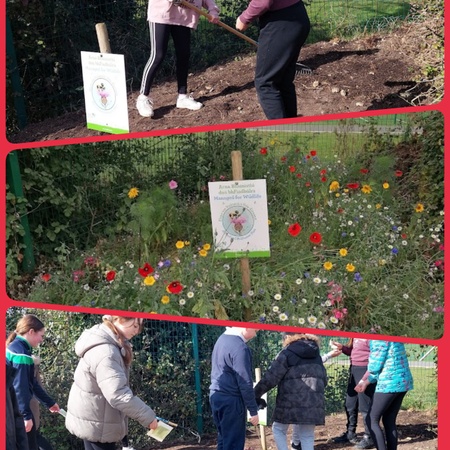
We are all delighted to see how all our flowers have come on over the holidays. We are now getting ready for our new fence to be prepared and put up to keep all the beauties save. Very soon, we will bring some company for the flowers and insects to find more work to do. Watch out!!!!
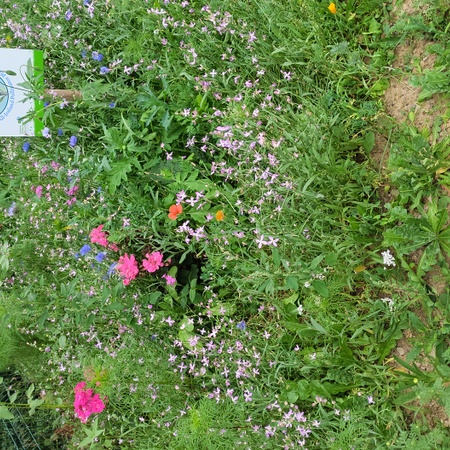
As previously outlined on the school plan below, pollinator patch (1) is now fully growing and enjoying the sun and rain that has been helping those little seeds to grow into beautiful flowers.
During the holidays, only the insects and a few people working in the school can enjoy this wonderful growth but soon, the children can enjoy this view too.
Our fence is ready to be painted and put up for the new school term, so these flowers will not be disturbed from anyone walking inside this area.
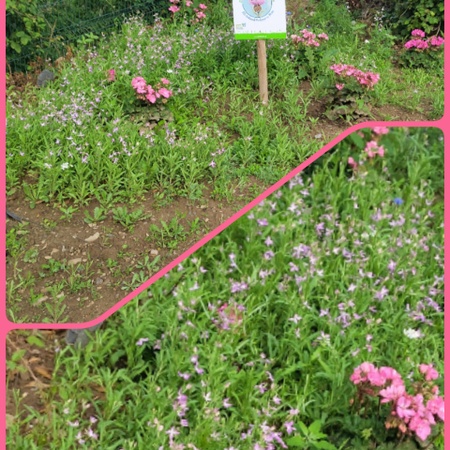
The children drew a map of the school and marked the locations of our planned wildflower gardens.

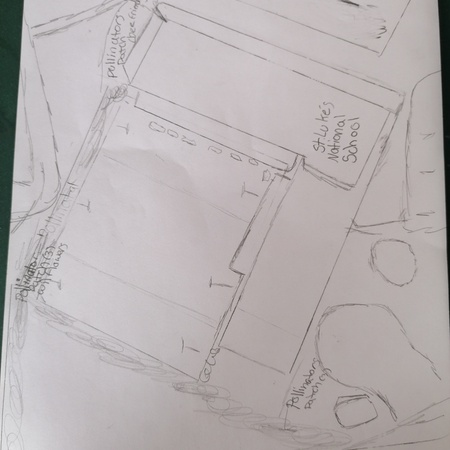
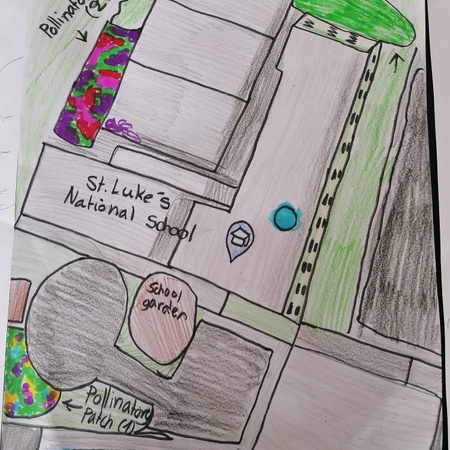
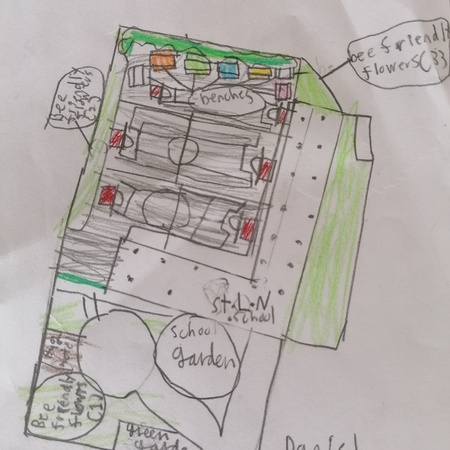
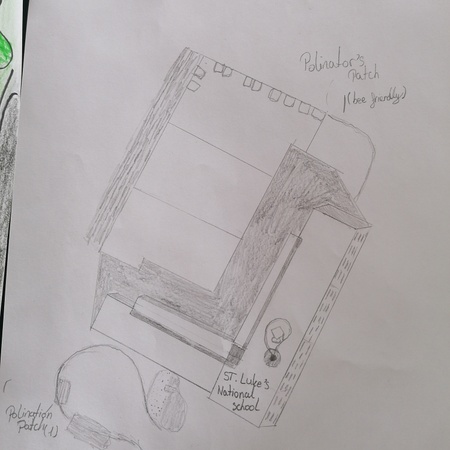
While we are waiting for the topsoil to be levelled, we got busy with planting more pollinator friendly plants on our "Adopt a Patch which we have received from @TU Dublin Horticulture Department. Two nature loving boys from 6th class were planting and learning about the need of planting pollinator friendly plants in our community. Thank you to Jack and Jake.
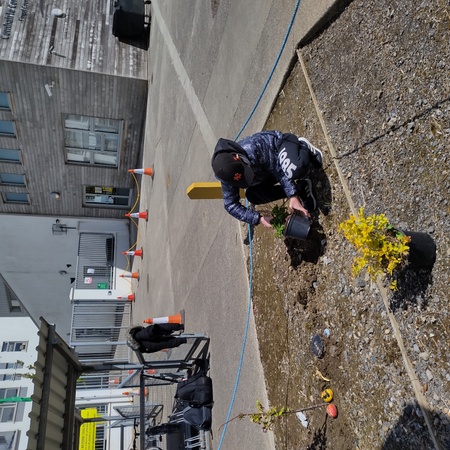
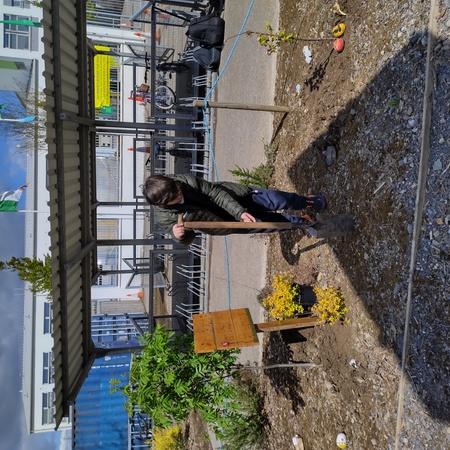
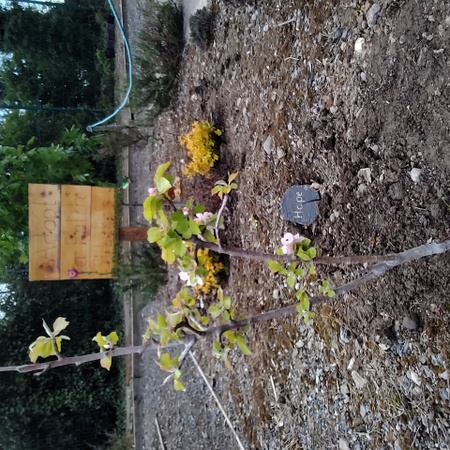
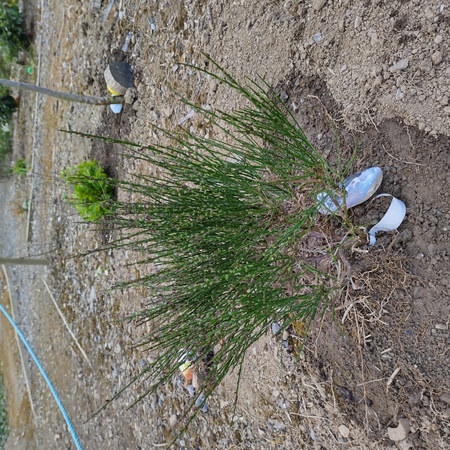
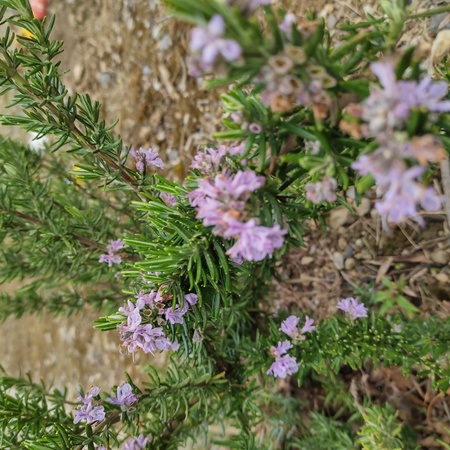
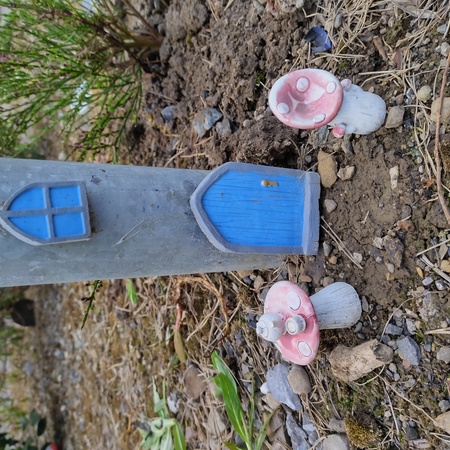
A big THANK YOU to our 5th class pupils, who have now completed taking the measurement of the planned wildflower areas around the yard. One single plan, includes various skills development: communication, teamwork, maths, problem-sovling, fine & gross motor skills etc.
Now we are ready to order the right amount of native wildflower seeds.
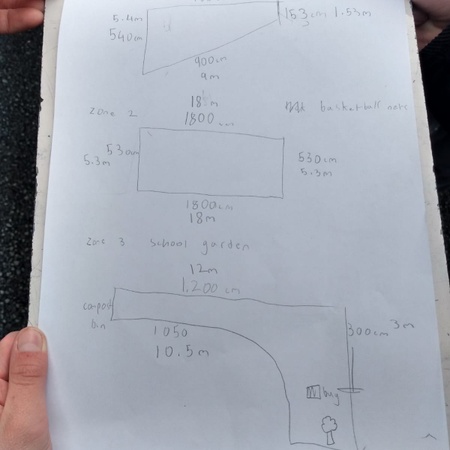
The boys and girls in 5th class have been busy measuring the plots around the school grounds for the planting of our wildflowers. We are looking forward to filling the plots with wildflowers very soon to attract all our insect and bee friends for a visit.
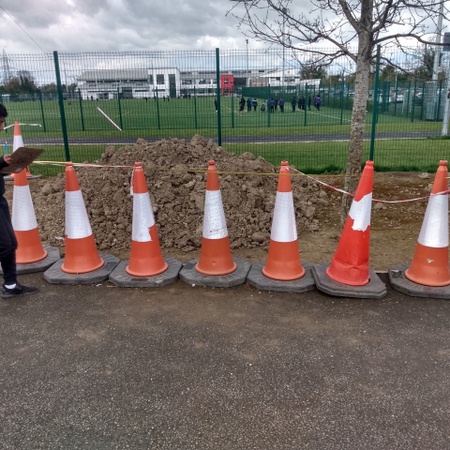
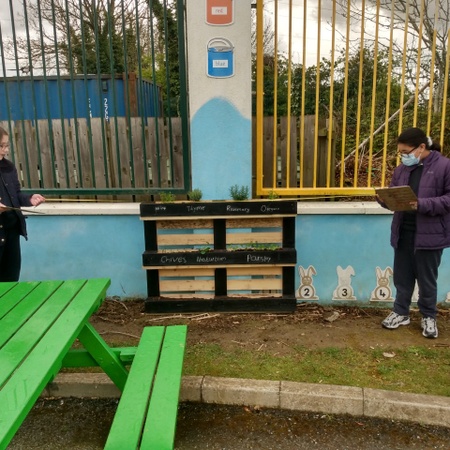

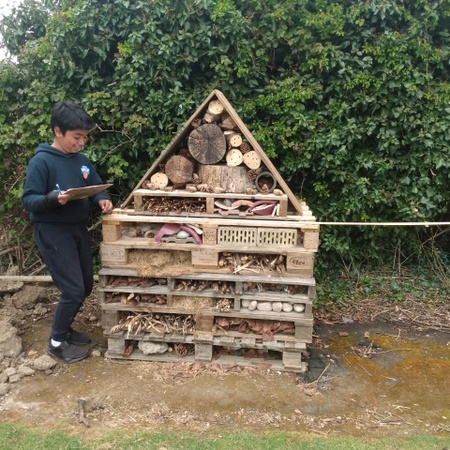

Our first team meeting with some of the team members was encouraging and brought many ideas and suggestion along, which we will share with you shortly. We looked at areas around the school ground, that can be used to develop an area to support biodiversity and to bring the pollinator plan junior into action.
The topsoil will be arriving tomorrow and pupils will help to level the soil on the designated areas.
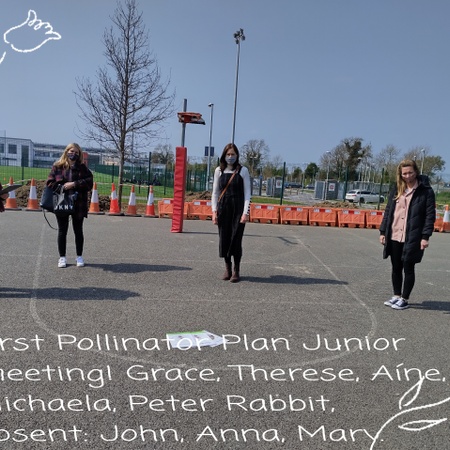
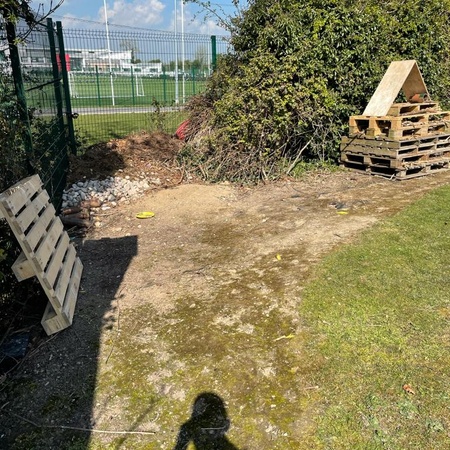
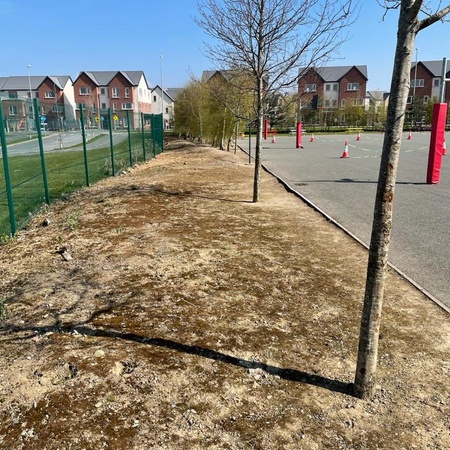
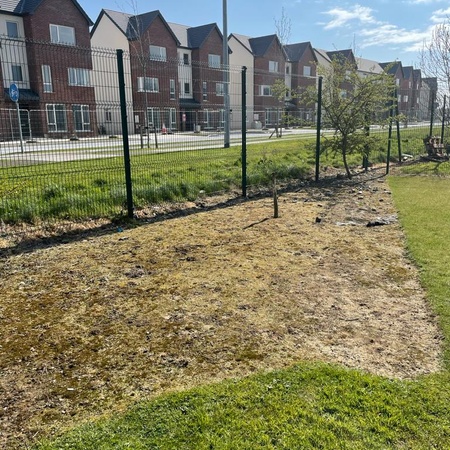
3 Participants
